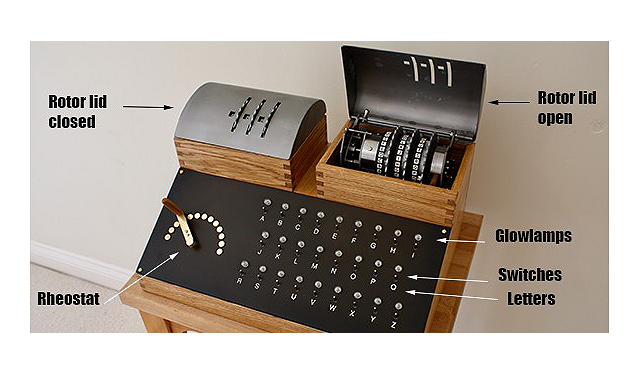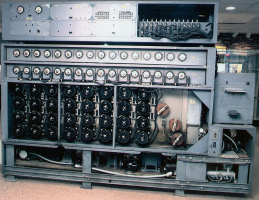

So, there is at least one chance left to add your name to the winners list. Congratulations!Īpparently, challenge 4b is still unsolved. This can be seen on the following chart:Īpparently, George has deciphered nine challenges over the last few days. Today, when I started writing this post and looked at the web page again, the situation had changed. When George sent me his mail, many of the challenges were still unsolved. enigma EnigmaMachine() setrotors(enigma, 1,2,3) setrotorpositions(enigma, 1,1,1) setukw(enigma, 1) setplugboard(enigma, 'AT') Then we move the rotors by 5 steps to get to the first T.

George mentioned that Magnus and Fredrik provide a number of Enigma messages as challenges on their site (the following picture shows an excerpt): It was George Lasry who made me aware of this simulator a few days ago. So, if you want to break an Enigma message yourself, with the means of a WW2 codebreaker, try this software. This simulator is available on a website.
#Bombe enigma simulator online software#
Magnus Ekhall, a Swedish software developer and reader of this blog, has created a Bombe simulator (together with Fredrik Hallenberg). An original of this machine is on display at the NSA Crypto Museum in fort Meade near Washington. The US Bombe was made to attack the four-rotor naval Enigma. There was also a US version of the Bombe (also known as “Desch Bombe” for its constructor Joseph Desch). On the following photo, the rebuild can be seen: The picture shown above is one of the few (or even the only one) known that shows an original Bombe. From 1994 to 2007 a team of volunteers at Bletchley Park created a rebuild, which is today on display at the National Museum of Computing (a museum located next to the Bletchley Park estate). After the war all of them were dismantled (at least that’s the official story). The initial Bombe design was developed by Alan Turing in 1939, with an important refinement devised by Gordon Welchman in 1940.

Using the bomba and other machines, the Polish had been breaking German Enigma messages in the 1930s. The Bombe was a development from a device that had been designed by Polish mathematician Marian Rejewski, known as the “bomba”. In World War II, British codebreakers in Bletchley Park constructed a machine that could decipher Enigma messages: the Bombe (also known as the Turing Bombe or the Turing Welchman Bombe).


 0 kommentar(er)
0 kommentar(er)
